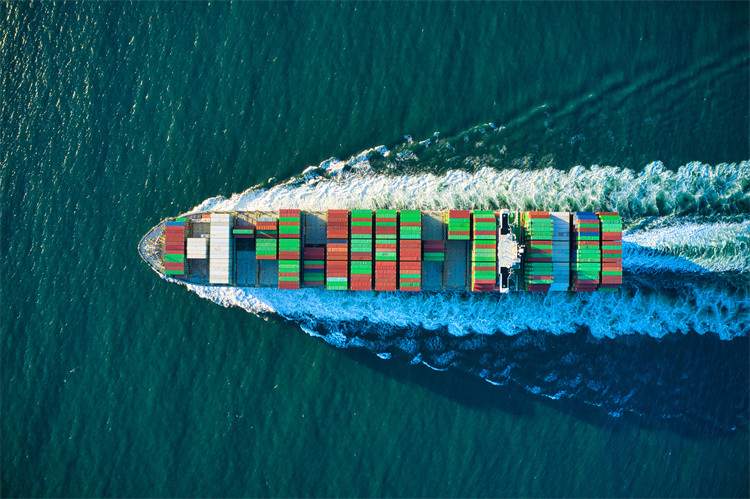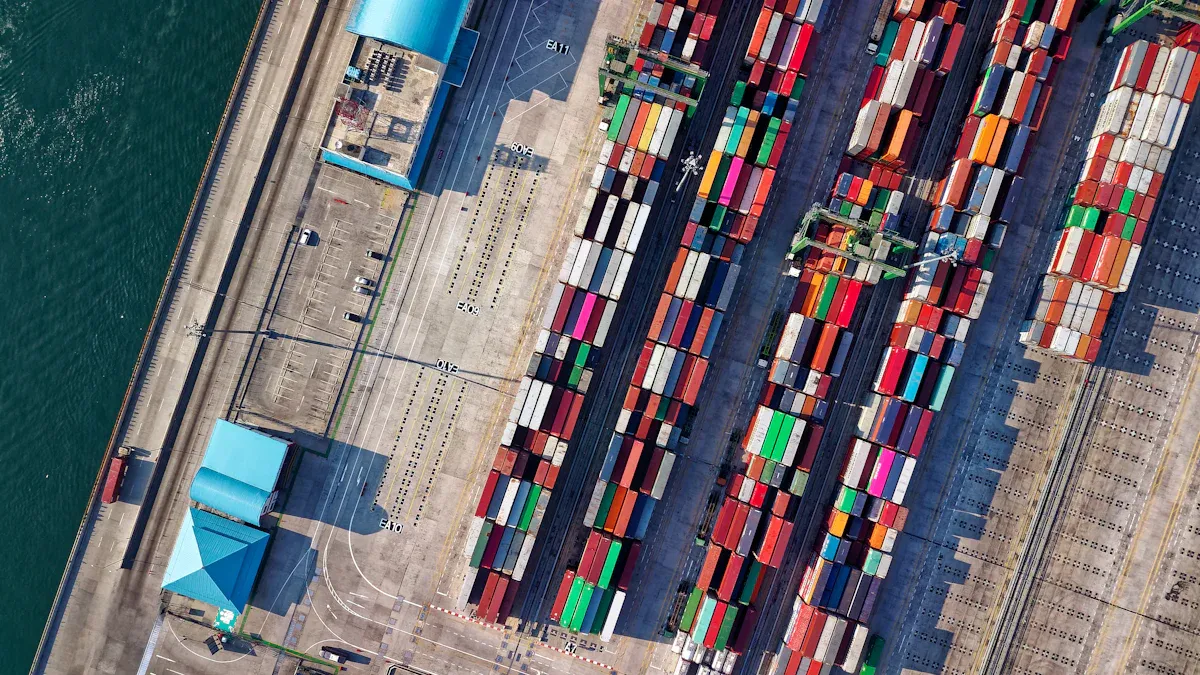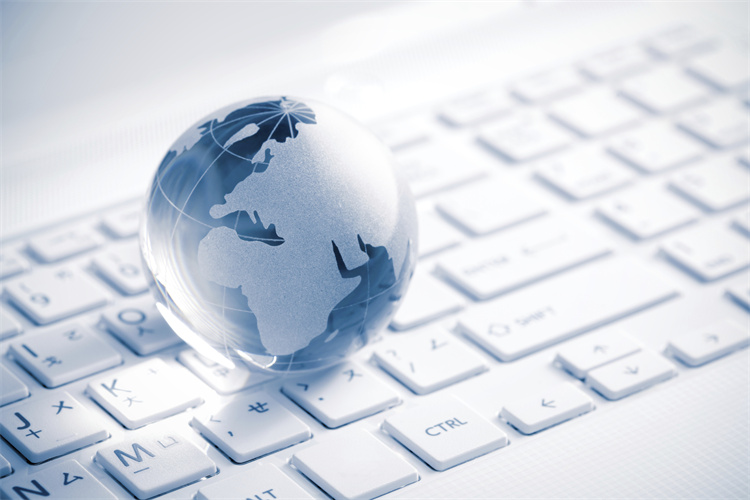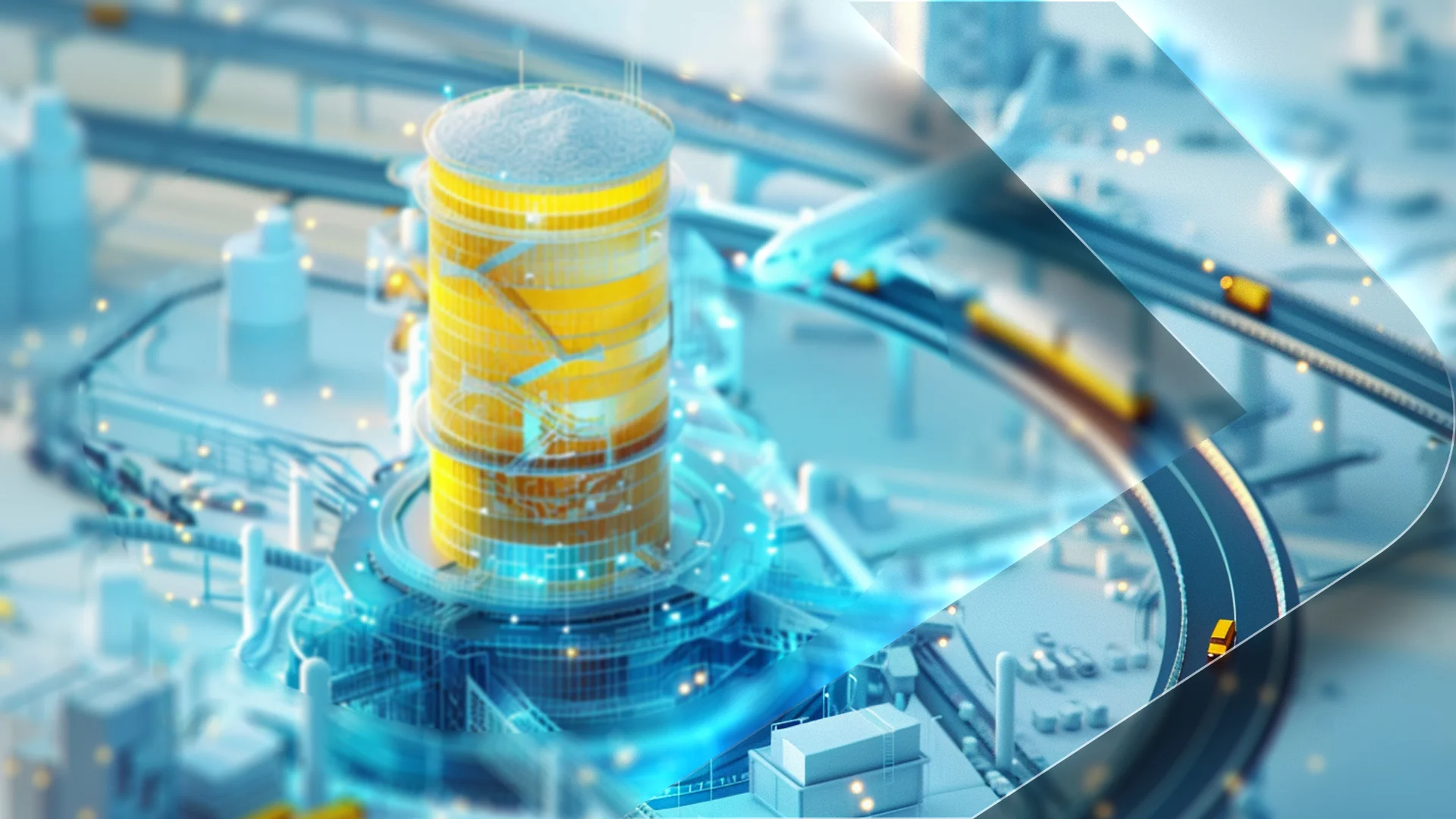The Role of AI and IoT in Modernizing Global Logistics

AI and IoT are transforming international logistics express lines in significant ways. These tools enhance speed, clarity, and intelligence in the logistics process. You can observe these advancements in global shipping services. For instance, companies like YTO Express are implementing innovative solutions such as smart lockers and drones for deliveries, which help meet the increasing demands. By 2025, these innovations will enhance online shopping deliveries. JUSDA is at the forefront, pioneering ideas to improve and expedite deliveries.
Key Takeaways
AI and IoT are changing logistics by making it faster and better. Businesses use these tools to improve deliveries and satisfy customers.
IoT devices allow real-time tracking, so customers know their shipment status. This openness creates trust and makes customers happier with services.
Using AI tools helps companies guess demand and manage stock wisely. This saves money and uses resources more efficiently.
Defining AI and IoT in the Context of Global Logistics
Understanding AI in logistics operations.
AI is changing logistics by making tasks easier and faster. It helps manage inventory by tracking stock and placing orders automatically. In warehouses, AI improves how items are picked, packed, and arranged. Another important use is predictive maintenance. AI checks equipment data to find problems early and plan repairs, avoiding delays.
Here are some key facts about AI's impact:
Evidence Type | Statistic/Insight | Source |
|---|---|---|
Robotic Process Automation (RPA) | 60% of companies expect RPA to improve supply chains by 2025 | Statista |
Cost Reduction | 44% of executives saw lower costs with AI use | McKinsey Global Survey |
Environmental Impact | AI helps cut fuel use and greenhouse gas emissions | Accenture |
These numbers show how AI saves money, boosts efficiency, and helps the environment.
The role of IoT in enhancing supply chain visibility.
IoT makes it easier to see and track supply chains. Sensors in trucks and warehouses send live updates about shipments, fuel, and engines. This helps predict delivery times and make better choices. For example, IoT lets you follow shipments live, keeping customers happy and informed.
IoT is growing fast in logistics. Its market is expected to grow from $53.25 billion in 2024 to $119.68 billion by 2030. This shows how much companies depend on IoT for better supply chains.
How AI and IoT work together to drive innovations in logistics.
AI and IoT work as a team to improve logistics. IoT sensors collect data, and AI studies it to give useful insights. For example, IoT sensors check vehicle health, and AI predicts problems before they happen. This helps plan repairs and avoid breakdowns.
UPS shows how this teamwork works. Their ORION system uses AI and IoT to cut delivery truck miles by 100 million each year. This saves $300 million, reduces CO2 by 100,000 metric tons, and speeds up deliveries. It also helps UPS stay ahead in global logistics.
Together, AI and IoT are changing logistics. They help make smarter decisions and prepare for future trends beyond 2025.
Emerging Logistics Trends Shaped by AI and IoT

Real-time tracking and monitoring with IoT.
IoT has changed logistics by allowing live tracking of goods. Sensors in trucks and warehouses send updates about shipments. This helps you follow your cargo from start to finish. For example, IoT devices track where goods are at all times. If delays happen, you can quickly change your plans. These sensors also check sensitive items, like medicine, to keep them safe.
Tracking in real-time also helps manage fleets better. IoT tools watch fleet activities to improve routes and save fuel. Sensors alert managers when vehicles need repairs, avoiding breakdowns. This keeps deliveries on time and builds trust with customers.
Here are some benefits of IoT in logistics:
Real-Time Cargo Tracking: Live updates make customers happier.
Fleet Management: Better routes and safety save time and money.
End-to-End Visibility: Watching goods from start to delivery cuts delays.
Proactive Maintenance: Alerts help fix vehicles before problems grow.
AI-driven supply chain optimization for predictive analytics.
AI is improving supply chains by using data to predict needs. It looks at past trends to plan inventory and demand. This reduces waste and uses resources wisely. For example, one company used AI to cut fuel use by 15%. They also delivered 20% more on time and worked 25% faster overall.
AI predictions also help make smarter choices. It warns about possible problems so you can adjust plans early. This is very useful in today’s fast-moving logistics world.
Here’s how companies are using predictive analytics:
Metric | Percentage |
|---|---|
3PLs moved to the cloud | |
Shippers moved to the cloud | 86% |
3PLs investing in predictive analytics | 80% |
Shippers investing in predictive analytics | 77% |
These numbers show how AI is helping companies improve supply chains.
The rise of autonomous vehicles and warehouse automation.
Self-driving trucks and drones are the future of logistics. They are being tested to make deliveries faster and cheaper. These vehicles work all day and night, even during busy times. This reduces mistakes and saves money for companies.
Warehouses are also becoming more automated. Robots and conveyor belts now handle sorting and packing. This speeds up work and lowers the need for manual labor. In 2023, the warehouse automation market was worth $30.9 billion. It is expected to grow by 15.93% yearly from 2024 to 2032.
Here’s a look at the market growth for these technologies:
Year | Market Value (in billion USD) | Projected Growth (CAGR) |
|---|---|---|
2024 | 29.6 | - |
2031 | 60.04 | - |
2023 | 30.9 | 15.93% |
These changes show how AI and IoT are shaping the future of logistics. They help businesses stay ahead and work smarter.
Key Applications of AI and IoT in International Logistics Express Lines

Improving supply chain tracking with smart sensors.
Smart sensors have changed how goods are tracked in logistics. These devices give live updates about shipments, so you always know their location. For example, they check temperature, humidity, and position, which is helpful for items like medicine or fresh food. This tracking helps you act fast if delays or problems happen.
Sensors also help manage vehicles better. They watch how trucks perform and warn about repairs before breakdowns. This reduces delays and keeps deliveries on time. By 2025, using smart sensors will become normal in logistics for better tracking.
Smart sensors do more than just track shipments. They also make customers happier by giving accurate delivery updates. When people know when their packages will arrive, they trust your service more. This is why smart sensors are key to modern logistics solutions.
Simplifying cross-border logistics with AI tools.
Cross-border logistics face challenges like customs rules, route changes, and demand shifts. AI tools make these tasks easier and improve efficiency. They study large amounts of data to predict demand, manage inventory, and cut costs.
Here’s how AI tools help improve logistics:
Key Findings | Description |
|---|---|
Demand Forecasting | |
Inventory Management | AI plans stock levels and delivery routes for better results. |
Cost Reduction | AI lowers costs and improves delivery times for happier customers. |
For example, AI can tell when products will sell more, so you can stock up early. It also finds the quickest and cheapest delivery routes, saving time and money. With AI, cross-border logistics become smoother and more reliable.
JUSDA’s China-Europe Express Rail: A model of innovation.
JUSDA’s China-Europe Express Rail shows how AI and IoT improve logistics. This rail service links China and Europe, offering a faster option than ships and a cheaper one than planes. It takes only 15-20 days, balancing speed and cost for businesses.
IoT sensors on the rail track shipments live, checking their location and condition. AI tools make customs processes faster and manage resources across borders. This reduces delays and ensures smooth deliveries.
JUSDA also connects sea and rail services, linking goods from Japan, South Korea, and Taiwan to Europe. This expands markets and improves tracking. By using AI and IoT, JUSDA sets a high standard for global logistics.
Tip: Want to improve your logistics? Try advanced solutions like JUSDA’s China-Europe Express Rail. It shows how technology can upgrade your supply chain.
The Role of AI and IoT in Solving Logistics Problems
Fixing issues in old logistics systems.
Old logistics systems often have problems like delays and poor planning. AI and IoT help solve these by making things faster and clearer. IoT tools track shipments live, so you always know where they are. AI studies this data to find better routes, saving time and fuel.
Here’s how AI and IoT fix these problems:
Benefit | How It Helps |
|---|---|
Live Tracking | IoT gives GPS updates to show shipment locations. |
Smart Predictions | |
Better Fleet Use | IoT checks vehicles to avoid breakdowns and delays. |
Clearer Tracking | IoT sensors make it easy to follow goods and stock. |
These tools make logistics smoother and keep customers happy.
Helping the environment with smarter solutions.
Logistics creates a lot of pollution, so being green is important. AI and IoT help by using resources wisely and cutting waste. IoT sensors watch fuel use, and AI finds energy-saving routes. This lowers pollution and saves 10-30% on costs.
Key eco-friendly changes include:
AI makes logistics faster and greener.
IoT reduces waste and saves fuel, helping the planet.
AI predictions stop overstocking, saving resources and cutting waste.
Using green logistics helps companies stay modern and eco-friendly.
JUSDA’s JusLink platform: A smart logistics tool.
JUSDA’s JusLink platform shows how AI and IoT can improve logistics. It uses IoT, cloud tech, and big data to track shipments and manage stock. It also predicts needs and adjusts plans quickly.
Main features of JusLink:
Tracks shipments live and gives useful data.
Manages stock and orders automatically for smooth operations.
Adapts to customer needs, saving money and boosting efficiency.
With JusLink, logistics become easier, faster, and better for the environment.
Solutions to Overcome Barriers in AI and IoT Implementation
Protecting data with better cybersecurity.
As more AI and IoT devices connect, keeping data safe is crucial. There are already over 15 billion IoT devices online, and this will grow by 2030. However, 45% of IoT security problems come from network attacks. Using AI-powered cybersecurity tools can reduce the time to find and fix breaches by 27%.
Here’s how to protect your logistics systems:
Encrypt data to keep it safe from hackers.
Update software often to fix security issues.
Teach employees how to spot cyber risks.
Focusing on cybersecurity keeps your operations smooth and builds customer trust.
Training workers for a tech-focused future.
AI and IoT need skilled people to run them. Training programs, like robotics or data analytics courses, help workers learn new skills. Companies that train their teams see a 30% boost in efficiency.
You can help your team by offering workshops or online classes. These programs teach workers how to use advanced tools. This reduces mistakes and improves work quality. A trained team keeps your logistics competitive as technology changes.
Learning from JUSDA’s smart logistics solutions.
JUSDA shows how to solve problems in AI and IoT use. Their JusLink platform uses IoT and big data to improve supply chains. It tracks shipments live, predicts demand, and automates tasks. These tools handle complex networks and improve performance.
By matching IoT plans with business goals, JUSDA adds value for companies. Their ideas help overcome challenges and unlock the full power of AI and IoT in logistics.
Tip: Get ready for 2025 by using advanced tools and training your team. This will speed up deliveries and improve results.

After the update
Supply Chain Management Solution
AI and IoT are changing logistics by making them faster and clearer. Using big data helps businesses stay ahead by spotting market changes and fixing hidden problems in supply chains. Tools like the Logistics Trend Map help companies handle challenges better. JUSDA’s smart ideas, like JusLink, prepare you for success in 2025 and beyond, keeping deliveries smooth and reliable.
See Also
Transforming Logistics: The Future of AI Supply Chains
Exploring AI's Hidden Opportunities Within Logistics Systems
Navigating Tomorrow's Logistics Through Digital Innovations
Discovering AI's Role in Shaping Future Supply Chains
Innovative Supply Chain Solutions Transforming Logistics Landscape
